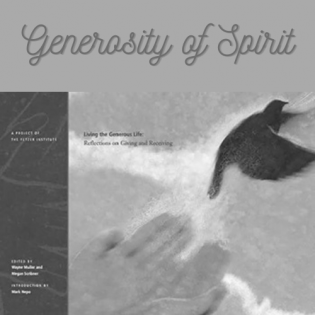Generosity of Spirit Folktales
What can we learn from diverse people and stories about generosity and taking action for the common good?
Photo Credit: High school students in La Ceja by World Bank Photo Collection is licensed under CC by 2.0
This unit includes access to folktales from all over the world, revealing a "generosity of spirit" that speaks the common language of "giving." Learners learn the components of a folktale, define philanthropy, and then read a variety of folktales that illustrate differences and similiarities across cultural influences.
Access to an overview and list of all the folktales is linked here: Folktale Guide: Generosity of Spirit
This lesson introduces the type of folklore known as folktales. Young people identify the traits of folklore found in cultures across the world, including the common theme of "philanthropic giving."
When times are hard, it is sometimes difficult to remember that the things that count are not material, and the people who make a difference in our lives are the ones we often take for granted. We read five Jewish folktales that reveal gifts of generosity in everyday events of life. Through reading and discussion, the learners discuss the folktale's message and connections to philanthropy.
Sometimes it is wise to follow the advice of others and at other times it will only bring disaster. This lesson examines stories from South Africa, Morocco, and Nigeria and character traits valued in those cultures.
Native Americans, or Indigenous People, are located geographically across the entire continent of North America. There are many stereotypes of native culture, but their culture varies as much as their locations, as each group of native peoples have their own traditions. This lesson focuses on seven Native American groups and their folktales as they relate to generosity of the spirit.
All cultures have practices and customs regarding hospitality, or how we treat guests. In these folktales, we learn about different expectations and degrees of these customs and how travelers test the limits of hospitality and feel the effects of their host's generosity.
The learners explore folktales related to forgiveness. They investigate how compassion is interrelated with forgiveness, and describe challenges to real forgiveness.
Through folktales from around the world, learners explore humans' important role as caretakers of the Earth and the role of civil society in environmental stewardship.
Through the three Suni folktales, learners analyze the lessons in generosity and behavior for the common good.
Learners explore character traits and life lessons through folktales from various American cultures. The stories illustrate the impact of "paying a debt forward" rather than "paying it back."
Wealth may be measured in something other than money. We may feel wealthy if we have a loving family or good health. Community wealth may be in relationships, respectful leaders, and good places to visit.
Through four folktales from different parts of the world and wisdom traditions, learners explore how to make decisions in difficult situations. They define discernment and wisdom and give examples of each in real-life situations.
These Australian folktales compare selfish and unselfish behaviors and tell the origin story of our permanent responsibility as caretaker of the land.
Learners analyze characters in five European folktales, particularly female characters. They analyze what small acts of kindness contribute to both the giver and receiver.
The featured folktales explore themes of helping people make judgments of integrity in different situations.
As demonstrated in these folktales, even the smallest things, when shared, can be examples of philanthropy.
Sometimes you have to give up what you truly love to get what you really want. That can be a hard lesson when you have almost nothing. This lesson looks at who has the responsibility to be generous and what changes can come about because of one’s generosity.
When life is at its most difficult and grief is great, a generous sacrifice can move the spirit toward life again. In these folktales, two Inuits face death with a truly generous spirit.
Learners analyze Buddhist folktales to determine their relevance to everyday life. There are times when the easiest thing one can do is leave and let others deal with a stressful situation. When one stays and works through the tough times with responsibility and respect, it can be a gift, not only for those who are also there, but for the one who makes the decision to stay.
In the featured folktales, we learn the impact of misjudging the character of another, and understand that an evil act does not require a person to return evil with evil.
There are times when a person learns that it is better not to give a generous gift at all if it will be disrespected by the receiver. There are also times a person may realize too late that there is a cost for bad behavior.
